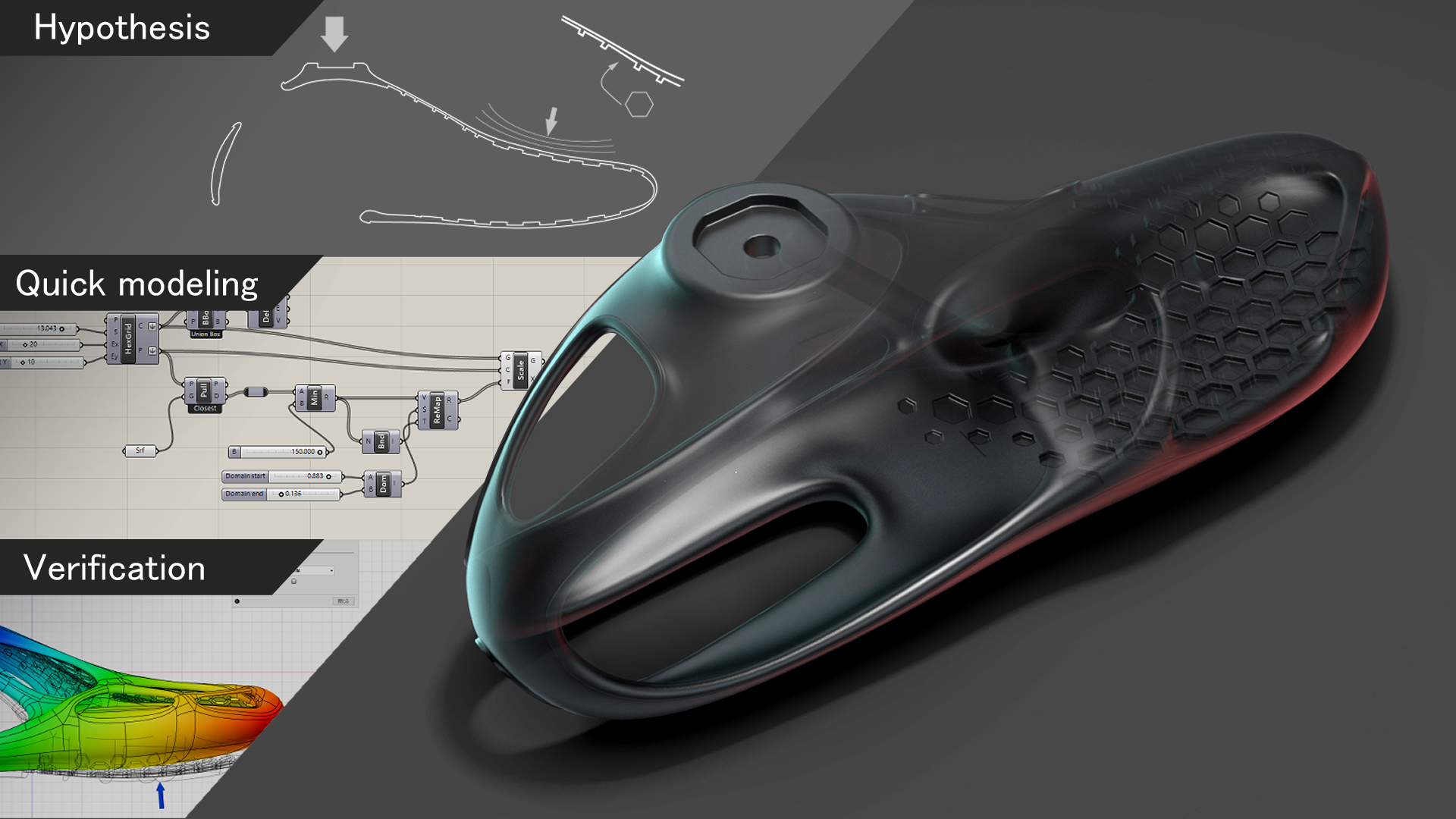Copyright GK Dynamics Inc., All Rights Reserved.

Copyright GK Dynamics Inc., All Rights Reserved.



Parametric design is often used in the field of product design. Many designers have acquired enough skills for programming. Why do designers learn programming? Some people may believe that designers should focus on making sketches and leave it up to specialist programmers to carry our programming processes. As for me, though I have no intention to become a professional programmer, I have four reasons to learn programming.
First reason: Programming helps to create forms that can’t be expressed in drawings.
Designers exercise their imagination in three dimensions and express ideas in two-dimensional drawings. When it is difficult to stretch their imagination in three dimensions, they try to get ideas by making tangible models or making use of digital modeling. That helps them conceive forms that otherwise are hard to imagine. However, this process has its drawback: Designers can turn ideas into concrete forms only when they already have them in their mind. Ideas that are beyond the reach of their imagination can’t be expressed in drawings, nor is it hard to make models from them. When I try to get something beyond my imagination, I think programming offers a clue for breaking the mold
Second reason: Programming provides chance encounters
When making a sketch, I try various measures to think in more flexible ways and get ideas I usually can’t come up with. For example, I try some unusual methods like using a calligraphy brush instead of my favorite pencil or using my non-dominant hand for drawing. Some designers may try to produce drawings on tissues. Using these methods promotes chance encounters with new ideas and helps to generate new designs. I think programming-aided design is useful as it enormously increases those encounters. In programming, designers turn each element of designing into a parameter and combine those variants for analysis. When unexpected results are delivered, they take advantage of them to get some clues to designing.
Third reason: Programming increases efficiency
I usually analyze each of my design processes and make task flows to enhance work efficiencies. Take as an example the prosthetic leg designed by our company for Paralympian wheelchair tennis player Takashi Sanada. I made use of parametric design when designing the honeycomb pattern on the back of this artificial leg. The size and depth of the pattern depend on the stiffness of the leg. So, when tuning the stiffness, I need to adjust the size and depth of the pattern for analysis. Depending on the returned results, I repeat the same adjust-and-analyze process. By introducing parameters to represent the size and depth, work efficiencies can be enhanced.

Fourth reason: Programming leads to widening the range of proposals
By repeating the three processes described above, and with the aid of computers that can provide unexpected analysis results, a new design method is added to those already installed in my head. The more I repeat those processes, the more proficient I become at producing wide-ranging and attractive proposals. To make the most of the computer’s possibilities, designers need to adopt programming.
These are the reasons for me to learn programing. There’s one thing we should keep in mind. Programming can automatically generate various forms, but they don’t deserve to be called design. It’s up to designers to make judgment on good design.
Chiang Chihlin
Digital Experience Design Dept.
Unit Leader